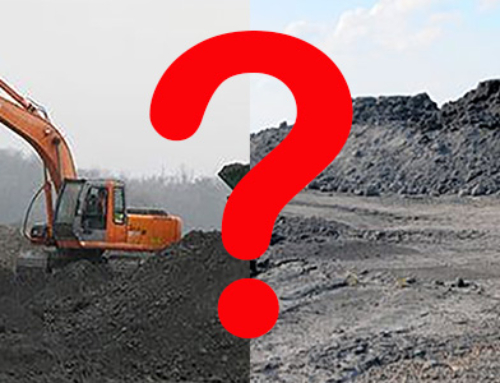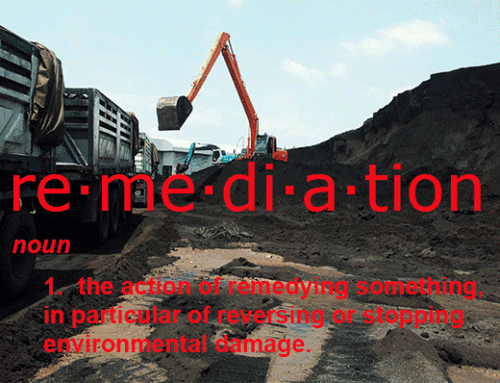Life Beyond: Old Dumping Grounds are Ripe for Adaptive Reuse
Communities with areas in decline have embraced the concept of adaptive reuse to restore historic buildings and reclaim their decaying or abandoned urban landscape. Such projects involve salvaging as much of the existing building material as possible and repurposing it in new ways to make the most of the “good bones” of existing structures. This is a more cost-effective approach than razing entire blocks and rebuilding from scratch.
Adaptive reuse of land is no different. Areas that have served as solid waste landfills or coal ash ponds are not doomed to spend eternity as eyesores on the landscape. In many cases, adaptive reuse can transform that land into better spaces than it was to begin with.
Nowhere stands a more amazing example of this than in Israel. The Dirt described how the Hiriya landfill, commonly known as the “Mountain of Crap,” received 25 million tons of waste over its 60-year life. Flocks of birds drawn to the garbage were causing problems for Tel Aviv’s Ben Gurion Airport, and toxic runoff leached into nearby water supplies.
Hiriya closed in 1999 and began its transformation into the 2,000-acre Ariel Sharon Park, roughly three times larger than New York’s Central Park. Rainwater is now collected and filtered to irrigate plant life on the sprawling mound.
Nearby waste facilities still in operation process 90% of municipal waste, recovering metal and glass for recycling and producing bio-gas to generate electricity. In addition, methane gas recovered from still-decomposing materials within the mound generates enough electricity to run a nearby textile factory.
A man-made lake and redirected water systems created around the area now serve as buffers against flooding in South Tel Aviv and Holon. Hiriya has become a paradise for outdoors lovers, with walking and bike trails, gardens and wildlife habitats. The project’s completion is planned for 2020. TouristIsrael.com describes the site as an “ecological masterpiece.”
But Israel isn’t the only country to master adaptive land reuse. A similarly impressive example in the U.S. is Freshkills Park on Staten Island. At 2,200 acres, it’s the largest park developed in New York City in over 100 years. Amenities will include playgrounds, athletic fields, kayak launches, horseback riding trails, and large-scale art installations. It’s a work in progress, opening in phases through 2036.
Like Hiriya, Freshkills also has submerged gas wells collecting methane still being generated by the decomposing waste. It’s piped it to a power company that in turn uses it to power approximately 25,000 homes on Staten Island, generating $12 million for the city annually.
Predating both of these projects by several decades is Tifft Nature Preserve, three miles from downtown Buffalo, New York. In the 1950s and ‘60s, this 264-acre landfill accumulated nearly 2 million cubic feet of solid waste, which is now encased in clay and covered with soil. The site opened in 1972 as a nature refuge with five miles of trails and boardwalks, ponds and woodlands.
Transforming a blighted area into an oasis for people to enjoy is a wonderful outcome, but another adaptive reuse that’s growing in popularity is solar farming. Once a landfill is capped with an impermeable geomembrane, it becomes a suitable surface for solar panels, a renewable source of electricity for communities.
In North Carolina, the 48-acre Hickory Ridge Landfill had a relatively brief useful life from 1993 to 2006, but after it was capped in 2011 and covered with over 7,000 solar panels, it has essentially become an open-air power plant. Because the land wasn’t replanted, rainwater runs off the panels and down the sides of the mound, to be captured, filtered and reused.
In December 2017, the Orlando Utility Company’s Kenneth P. Ksionek Community Solar Farm brought Orlando one step closer to its goal of running on 100% renewable energy by 2050. The utility installed 20,369 of 37,544 solar panels atop concrete slabs on an 80-acre hill that’s filled with coal ash. The remaining panels sit on nearby flat land. The new $15 million solar plant generates enough electricity to power more than 1,400 homes in the area, costing less per kilowatt hour than fossil fuel, creating a win-win for the environment and the community.
These five examples show how foresight and smart adaptive reuse can ensure that no land goes to waste and that its assets can be put to use to maximize its potential for generations to come. Thrillist.com offers 11 more amazing stories of land reclamation.
The time to face the future is now. Environmental Stewardship requires innovation, forethought and a desire to look beyond immediate problems so you can see the better way of life that lies beyond the horizon and strive to achieve it.






